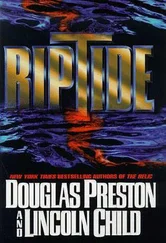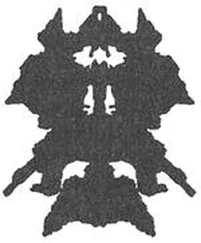He paused and looked around, squinting. “And so, the next stage of the investigation includes, among other things, tracking down and interviewing the captains of those six ships.” His eye fell on Pendergast. “Ah, Agent Pendergast, I’m glad to see you after an absence. Interviewing these captains is a perfect job for the FBI. I’d like you and the agency to take charge of that.”
When Pendergast didn’t respond, or even acknowledge he had heard, Baugh said, voice raised: “Agent Pendergast? Hello?”
The FBI agent was still standing with his arms crossed. It was hard to tell what he was thinking, his face still obscured by the hat. After a moment he nodded curtly.
“Any luck with the NCAVC databases?”
“It would seem this case has no precedent.”
“And how is the investigation on the source of the shoes coming?”
“Very well, thank you. We have an agent in China.”
The “thank you” somehow managed to sound faintly insolent, but maybe, Perelman thought, it was just his imagination.
The commander then began to dole out other assignments, and it was at this point Pendergast chose to slip out of the room like a cat.
I hate to be crude, but that looks like... looks like...” Gladstone stopped, unsure what comparison to make.
“Well, I love being crude,” said Lam. “It looks like an exploded merkin.”
Maybe he’s right , Gladstone thought as she stared at the big-screen image of the southern gulf. Thousands of squiggly black lines started at Turner Beach and then went off in every conceivable direction. “What a mess. It makes no sense.”
“Well, I’m still refining the program,” said Lam defensively.
“How much more did this cost us in CPU time?”
“Um, about two thousand dollars.”
“Good Christ. So what’s the problem?”
Lam shook his head. “Basically, most of the mathematical solutions are going into imaginary space.”
“Which means?”
“The drift analysis is producing impossible results. There just doesn’t seem to be a place anywhere out there in the wide ocean where you could drop a hundred-plus feet and have them wash up on Turner Beach the way they did. The place just doesn’t exist.”
“It has to exist.”
Lam shrugged.
“What about the garbage stinking up the back room?”
Lam pantomimed the act of vomiting. “Cataloged anything remotely identifiable. No smoking guns.”
“What about the analysis? Did you work that into the equations?”
“I did. Not all of it — just select pieces to give us a broad enough sample. Same impossible results.”
“But we know the feet did wash up!”
Lam sighed. “As I said, it’s impossible.”
“It can’t be impossible ,” Gladstone said, feeling like tearing her hair out.
“Don’t yell at me!”
“I’m not yelling. I’m emphasizing.”
“Well, don’t emphasize at me! You know how sensitive I am.”
Gladstone rolled her eyes. “You need to figure out what’s wrong and rerun the analysis.”
“Okay. Fine with me. Each time I run it on the Q machine, it costs us five hundred bucks.”
Gladstone paused, thinking. A temporary silence filled the lab. And then she took out her cell phone and dialed, putting it on speaker so Lam could hear.
“May I speak with Agent Pendergast?” she asked when the call was answered.
“Speaking.”
“Gladstone here. I’m glad I reached you,” she said. “We’ve been working on the analysis you asked for.”
“And how is it going?”
“Um, well. Very well. We’ve prepared a full catalog of the debris that washed up, and we’re working on our mathematical models. We’re making great progress.”
Lam made a face.
“Delighted to hear it.”
“But the number crunching is getting expensive. We’re running up quite a bill with the Q machine at the university.”
“May I ask how much?”
“We’re a few thousand dollars into it, and we’re probably going to crack ten thousand before we get our answer.”
“You have my authorization to expend up to fifteen thousand.”
“Wow. Thank you, that’s great. Really great.” She paused. “There, um, is one other thing that would really help us refine our calculations. It’s kind of critical, to be honest.”
“And what might that be?”
“We need a foot. Two, actually. To accurately model drift behavior, along with several other variables.”
There was an extended silence. “How long would you require them?”
She glanced at Lam. He held up two hands, fingers spread.
“Ten hours.”
“I believe I can provide you with them — but it would be for half that long, at most, and I will need to be present at all times. Will that be acceptable?”
“Sweet mother of...” Lam began in a low voice. Then he went silent and, a moment later, nodded at her.
“Yes. Thank you. Thanks very much.”
“In that case, I shall do my best to be there within the hour. And I sincerely hope that the additional funding will help you and Dr. Lam make better progress. Good day, Dr. Gladstone.”
She lowered the phone. “I wonder how he knew we weren’t making good progress?”
“I don’t know, but I told you the guy had money.”
“That fifteen grand isn’t his own dough.”
“I wouldn’t be so sure about that.”
Moira Crossley waited while Special Agent Pendergast finished his call and slipped the cell phone back into his pocket.
“I beg pardon for the interruption,” he said.
What an odd fellow , she thought. She found his Southern gentlemanly manner and soft accent strangely soothing. But there was nothing soft or particularly gentlemanly in his keen, silvery eyes.
“Quite a few of the lab reports are back. I sent them over to your office for review.”
“I’ve received them but would greatly appreciate a summary.”
“Sure. Let’s go to my office, where we can speak privately.”
They were in the autopsy room and several assistants were still working on the last of the feet, carefully cutting off the shoes, looking for identifying marks, photographing, taking tissue samples, and, where necessary, dissecting and stabilizing the remains to remove dead sea creatures and small parasites that had burrowed into the flesh. Pendergast paused a moment to examine the process, restless eyes taking in everything, then returned his attention to her with a nod of apology.
She led him through the lab and into her office, with its single window overlooking the parking lot. The space was small, but she kept it meticulously neat and spare, a habit gained from years of living on a houseboat at a slip at the Cape Coral Yacht Basin.
“Please sit down.”
Pendergast took a seat and she sat behind her desk. Several files were laid out with military precision. She flipped open the first.
“You had raised the question as to whether the feet had been frozen. They were — immediately following amputation. All of them we’ve examined so far, at least. Microsections of tissue indicate they were frozen fast at a low temperature — somewhere in the range of minus thirty degrees Celsius. That’s much colder than household freezers typically go, which indicates these feet were stored in a professional-grade deep freezer, or even a laboratory freezer.”
“And how do you know this?”
“In freezing, microcrystals of ice grow inside the cells and rupture various membranes. From the pattern, we can get an idea of how fast and deep the freezing was. For these feet, it was both.”
Pendergast inclined his head briefly.
“And we’ve got some interesting results on the DNA testing,” she said, removing another file. “To summarize: a majority of the individuals we’ve tested so far, about sixty, have varying percentages of Native American blood — from 9 percent to 90 percent, with an average around 70 percent. Of the European DNA, the majority can be traced to the Iberian Peninsula — Spain — as well as southern and western Europe. There is also a portion of African DNA in many samples, varying from 3 to 15 percent. This mix is typical of the populations of Central America — in particular Honduras, Nicaragua, Guatemala, and El Salvador. To a lesser extent Panama and Costa Rica. Belize, Mexico, Colombia, and Venezuela are outliers, but still could be a partial match. We’re in the process of analyzing mitochondrial DNA to see if any of the individuals might be related to each other, and I should have the results by tomorrow, at the latest. In any case, Central America seems the overwhelming point of origin.”
Читать дальше










![Линкольн Чайлд - Стихи для мертвецов [litres]](/books/396536/linkoln-chajld-stihi-dlya-mertvecov-litres-thumb.webp)

